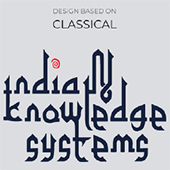The project provides resources for teaching the subject "Design Based on Classical Indian Knowledge Systems" to CBSE Class XII students based on the outline provided by the Design Thinking Curriculum of CBSE National Education Policy (NEP) 2020. The resources include the lesson plan for the subject, a book for exposure content, workbooks, an evaluation matrix for the workbooks and interactive content in the form of digital websites and a physical 3D printed model. Throughout the project, participatory evaluation of the above material has been done starting from an early stage, both with teachers and students. This iterative design approach resulted in several revisions of the above resources, based on evaluation results. The resources, especially the interactive ones, have been designed keeping in mind the implementation possibilities in CBSE schools in India, either today or in the future. For example, the 3D printed model leverages the fact that the Government of India has proposed incorporation of tinkering labs, called Atal Labs, in all schools within the next couple of years.
The future scope for this project would comprise of the following:
1. Further testing of the workbooks in a full-scale set with more number of students would give better and normalised results, resulting in better design insights. Considering the whole class of students would enable consideration of students of all capabilities, allowing for better and more accessible workbooks.
2. Since the subject is new for most Indian schools, it is important to consider the capabilities and motivation of the teachers. Thus, large-scale testing of the resources, especially the lesson plan and exposure content with as many teachers as possible would give better insights. Also, since neither the subject nor the teachers supposed to be teaching it exist yet, it is important to recognise the recruitment process for the teachers. For example, teachers with a strong background in Humanities and Arts would be able to better relate to the content provided, understand it and convey it to the students.
3. Since the exposure book contains a lot of content, a summarised guide could be provided to the teachers highlighting the most important parts. The exposure content itself could be digitised and made interactive, rather than being in a printed book format.
4. Some more interactive content could be added to teach the subtopics. For example, different layers of abstraction in 2D compositions (see Figure 63) could be digitally shown in the form of an interactive program, where the students could tinker with the different layers and see the results in real time.

